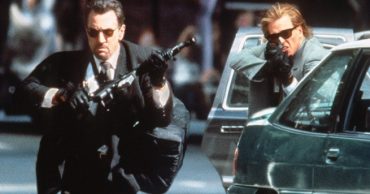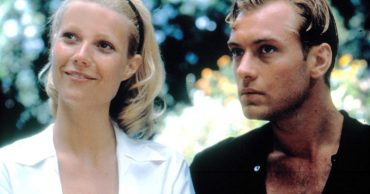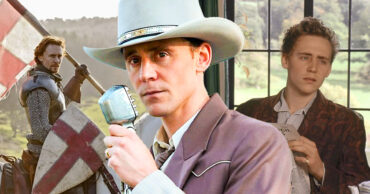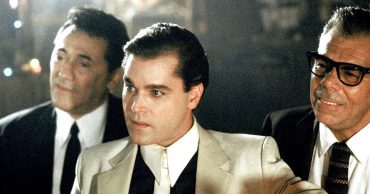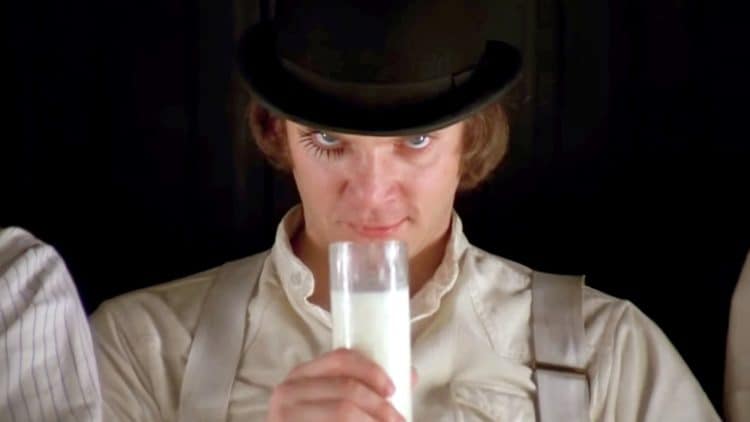
Stanley Kubrick is one of the most celebrated and studied filmmakers in the history of the medium. In terms of bridging the generational divide between classic Hollywood cinema, the auteur-driven European New Wave of the 1960s, and the modern era, Kubrick got to display his signature style and filmmaking prowess within each. In a career that spanned nearly half a century, Kubrick made only 13 feature films, and each film features it’s own methodically-staged, filmed, and unique vision of stories that ran the gamut of the full spectrum of human emotion and progress. Since his untimely death in 1999 at the age of 70, his imprint on cinema and his overall legacy has only grown–and he was already a legend in his time. His films could be cold, detached, and nihilistic, but this was part of his audacious examination of humanity’s deepest flaws. When he wasn’t probing uncomfortable truths about the human condition, he was making us glimmer in awe at the wonders of the cosmos in 2001: A Space Odyssey (1968) or, forcing us to laugh at the hypocrisy and madness of the worst impulses of the Cold War (Dr. Strangelove). There have been endless rankings of his filmography, but any movie aficionado cannot help but add their input to the conversation. With that, here are my own personal rankings of the Kubrick canon.
13. Fear and Desire (1953)
It is not often that a legendary filmmaker’s first film comes in last in fan rankings, but the low-budget, experimental Fear and Desire was more of a message movie far more overt than the subtle tones he would use in later war films. The film explores a fictitious war between two unidentified countries, and focuses on a string of characters who speak about the horrors and senselessness of the conflict. The film only runs for about an hour, and is superbly made for it’s low-budget, but pales in comparison to what Kubrick achieved with Paths of Glory.
12. Killer’s Kiss (1955)
Killer’s Kiss was Kubrick’s follow-up to Fear and Desire, and his first feature to receive full studio backing by United Artists. With a 67-minute running time, and a modest budget, the movie is an intriguing film noir that explores the love triangle between a down on his luck boxer, a gangster, and the gangster’s dancer girlfriend in early 50s NYC. As a film noir, the film is just strange and offbeat enough to qualify–but not by much. The movie is also surprisingly lacking in Kubrick’s legendary filmmaking techniques, but again, it was his second feature film during a time when the Hays Production Code was rough on movies that explored dark subject matter.
11. Spartacus (1960)
Kubrick’s first epic, and arguably his first mainstream film in what we know as a blockbuster in this day and age, is also one of his most divisive. Kubrick himself dismissed the film, and since he was denied creative control by the studio (and producer Kirk Douglas)–it is easy to see why he felt this way. Spartacus is a grand movie with stellar performances from Kirk Douglas in the lead, and Laurence Olivier, Peter Ustinov, and Tony Curtis in supporting roles. It is also technically well made, and apart from the opening sequence, which was shot by fired director Anthony Mann who was replaced with Kubrick, the direction combines the best of Cecil B. DeMille with a touch of David Lean. But despite Kubrick’s best efforts, the film is oddly romanticized and uneven.
10. Lolita (1962)
By 1962, Kubrick had left America to live full-time in the English countryside, and his filmmaking sensibilities also became less Hollywood and more arthouse. His first film after this transition was an adaptation of Vladimir Nabokov’s controversial book Lolita, and the result was decent but flawed. Adapting this book’s subject matter to the screen was always going to be difficult, and to Kubrick’s credit, the Hays Production Code would have shredded the film to pieces had he made it more serious, faithfully erotic, and less comedic. But the film is oddly enough a comedy of sorts–even when pedophilia forms the central themes of the plot. The book itself is often understood as a dark comedy, but the comedy in the film is more deadpan than satirical, and Kubrick’s best comedy was yet to come.
9. The Killing (1956)
The Killing was Kubrick’s third film, and the third time was certainly the charm. The movie is a film noir, but instead of going along with the cliched, “crime doesn’t pay” trope, Kubrick fashions a bold, vibrant, and compelling allegory for the wave of nihilism sweeping the globe after the end of World War II. The main character is a career criminal going in for one last heist, but the brilliant final scene shows us that rather it is an everyman punching a clock or a criminal putting in the work to steal, the weight of the system crushes everybody equally.
8. Eyes Wide Shut (1999)
Eyes Wide Shut is the now iconic final film from Kubrick, in fact, he died 4 months before it’s release in July 1999. And like all Kubrick films, the movie’s true meaning and mysterious power is still sparking analysis and reappraisals with each passing year. Is this ultimately a good film? Yes, most certainly, but the film may never be able to live down the giant question mark that is attached to it. For all the mystery within the movie’s dreamlike, surreal narrative, there was also some controversy surrounding additional post-production completed after Kubrick’s death–Warner Bros inserting CGI images in front of sexual acts being the most jarring. Eyes Wide Shut is spellbinding but bloated, strikingly beautiful to look at, but hollow. It wins a high ranking for it’s sheer power to keep audiences reappraising their initial opinions–I initially despised the movie.
7. Full Metal Jacket (1987)
Full Metal Jacket is probably the most unique of all war films. The first half of the film is the best depiction of Marine boot camp on film, and the second half is a slower-paced, visceral examination of combat in the Vietnam War–cinema verité style. An endless debate concerning the necessity of the second half after the classic first half will always persist, but I think the film’s brilliance is the juxtaposition of the two sequences. We see the hell of Marine training, and then we see what it’s all for, with Kubrick closing the film with a haunting, juvenile refrain of the Mickey Mouse Club theme song from soldiers walking through a decimated Vietnamese city. Despite its popularity as a bravado piece, this is not pro-war, it is anti-war to the core.
6. The Shining (1980)
The Shining has its flaws, and yes, it is wildly different from Stephen King’s brilliant book, but shot for shot, this is still the most technically dazzling of all horror films. The feeling of isolation and dread that slowly builds in the characters while staying overwinter in a haunted Colorado hotel is simply unforgettable. This film was also notorious for being the start of Kubrick’s technique for several, sometimes hundreds of takes from his actors–often for the most simple and pointless of scenes. The pay off is certainly dazzling to look at even if the script veers far from the book.
5. Barry Lyndon (1975)
In the early 1970s, Kubrick wished to make a large scale film about the life of Napoleon Bonaparte, but could never quite get the film out of development hell. Instead, he decided to use many of the planned techniques he was planning to use for Barry Lyndon, which is his most underrated film. As an 18th-century period piece, the movie is stellar, but it’s the pioneering cinematography, most of which was shot by natural light and candle light with a special lens designed by NASA, that is legendary.
4. Paths of Glory (1957)
Paths of Glory is Kubrick’s ultimate anti-war statement. This was also the first film that saw Kubrick’s methodical mastery of technique come to the forefront. The story, acting, message, and delivery are all exquisite. Kirk Douglas at his finest.
3. Dr. Strangelove or: How I Learned to Stop Worrying and Love the Bomb (1964)
Dr. Strangelove is both an outright comedy, thanks in part to Peter Sellers, in addition to being an unforgettable satire. Kubrick satirizes the Cold War conflict in terms that people can easily understand, and the end result is a stunning presentation of hypocrisy, strongman-itis, and the acceptance of a fate that we all cannot change–so just have a good laugh and get on with life.
2. A Clockwork Orange (1971)
A Clockwork Orange has taken on a mythic cult status in the half-century since its release. Consider the opening sequence–a blank orange title card backed by Wendy Carlos’ chilling synth-driven rendition of Henry Purcell’s classical music. After the title cards are read, the close-up of Alex DeLarge fills the screen with sinister unease. What unfolds after this is a fine representation of Kubrick’s artistic prowess for a narrative that will unfold in unsettling and revealing ways. What is evil and what makes a person evil? Is modern society and governmental structures the ultimate evil that inspires evil in others? The film is uncompromising and chilling in its journey to shed light on these questions.
1. 2001: A Space Odyssey (1968)
2001 is a landmark film that still inspires filmmakers to this day–it is also one of the most heavily analyzed films in film history. But apart from all the accolades and influence the film inspires, it is also fully-deserving of its status as one of the finest films ever made. The cosmos, our limited understanding of it, and our existential place within it is explored to great effect within every frame of this incredible film.
 Follow Us
Follow Us
